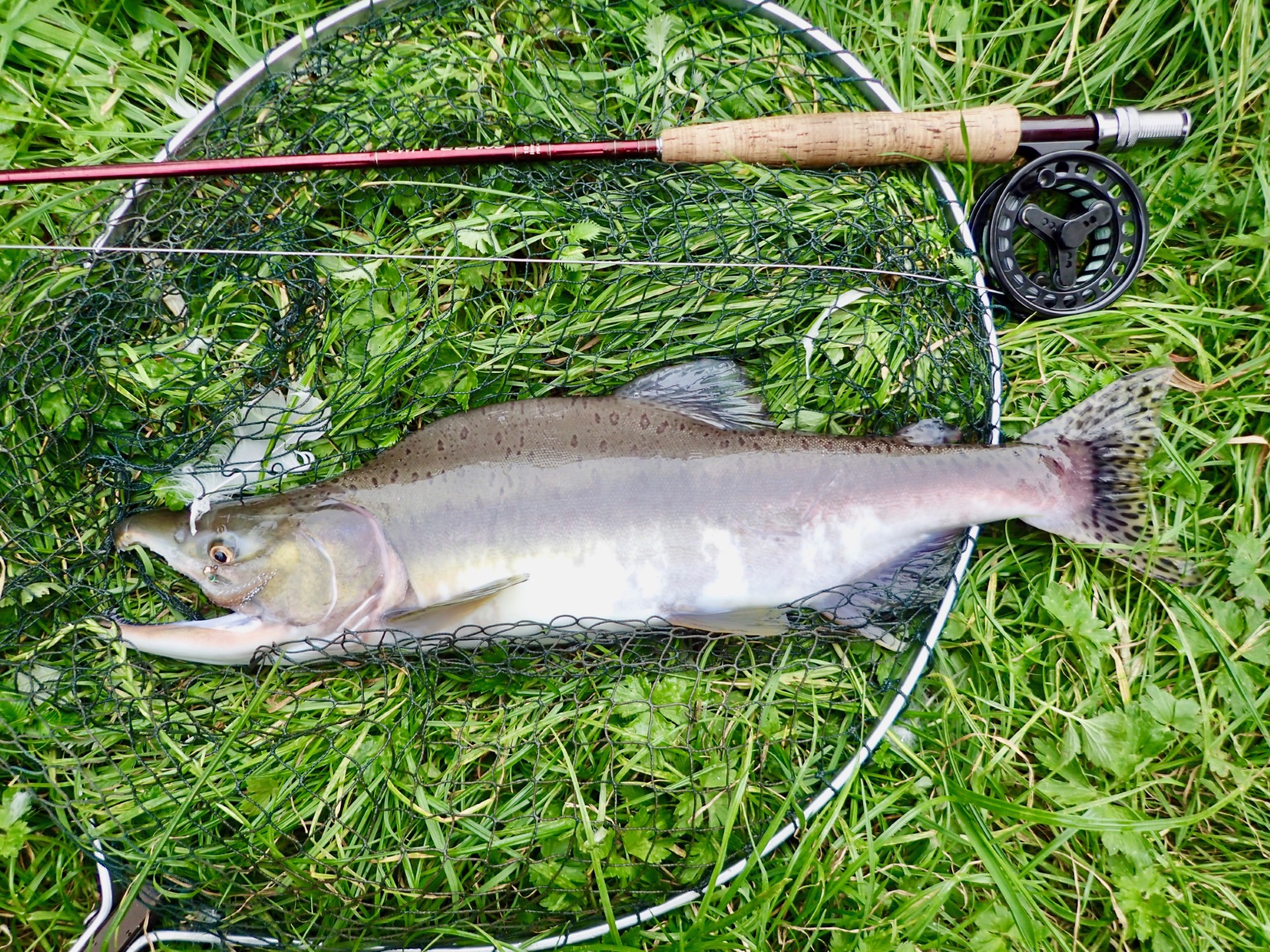Pink salmon filmed in Aberdeenshire Dee, as anglers urged to keep a lookout as captures of invasives increase
Pink salmon, the invasive species which originate from the Pacific Ocean, which have already shown up as far west as Ireland this season, have now shown up in the Aberdeenshire Dee, prompting further calls for angler vigilance in north-east Scotland, as they represent a threat to the native Atlantic salmon.
Believed to be the first record sighting of a pink salmon – underwater film footage of a pink salmon amidst a shoal of sea trout in river Laxford, north-west Scotland, taken on June 29. Credit:Chris Conroy/AST
These salmon breed in a two-year fixed cycle and the species last showed up in UK rivers in numbers in 2021, where 171 pinks were officially recorded. This is the first pink salmon filmed in the Aberdeenshire Dee. 2023 will see them appear once again, to spawn low down our rivers, in late summer.
The small male fish from the Dee weighed just over 1lb and has been retained for sampling. The Dee’s salmon fishery board has previously targeted pink salmon using the successful approach of speargun and also electro-fishing under licence from the Marine Directorate and NatureScot.
Anglers are encouraged to look out for fish which are typically 2-5lb in weight, have a heavily spotted tail, have a black mouth and tongue and very small scales. When fresh, they are very silver, changing to dark green/brown with a cream belly, while the males develop a pronounced hump in breeding conditions.
One of the main concerns are that these fish may bring in diseases and parasites which could infect the wild Atlantic salmon population, which is already facing declining numbers.

A pink salmon landed in the UK
How to distinguish a pink salmon:
• Large black oval spots on the tail
• Bluish back, silver flanks and white belly
• Much smaller scales than an Atlantic salmon of the same size
• Very dark mouth and tongue
• 40-60cm in length
• Breeding males develop a distinctive hump
In contrast, the native Atlantic salmon typically:
• Have no spots on the tail
• Usually larger (up 110cm in length)
• Pale mouth and tongue
• Larger scales
• One or two black spots on the gill cover
• Spots on the back above the lateral line
• Thicker base of tail than a pink salmon
Since June 29 so far this season in Scotland, 35 pinks have been caught from Tweed, along with reports of other fish from the Laxford, Halladale, and Thurso, as well as this fish from the Dee. They have previously turned up in Ireland, Wales and on English rivers.



